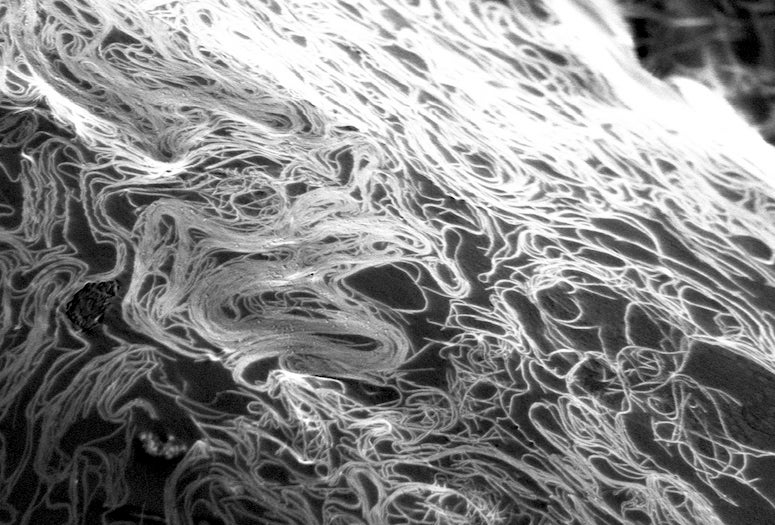HOUSTON – (April 27, 2022) – Carbon nanotubes that are prone to tangle like spaghetti can use a little special sauce to realize their full potential.
Rice University scientists have come up with just the sauce, an acid-based solvent that simplifies carbon nanotube processing in a way that’s easier to scale up for industrial applications.
The Rice lab of Matteo Pasquali reported in Science Advances on its discovery of a unique combination of acids that helps separate nanotubes in a solution and turn them into films, fibers or other materials with excellent electrical and mechanical properties.
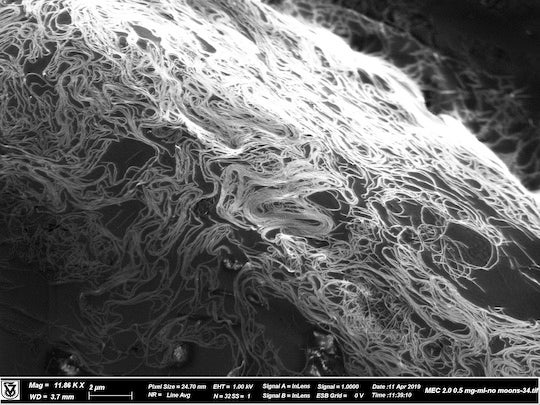
The study co-led by graduate alumnus Robert Headrick and graduate student Steven Williams reports the solvent is compatible with conventional manufacturing processes. That should help it find a place in the production of advanced materials for many applications.
“There’s a growing realization that it’s probably not a good idea to increase the mining of copper and aluminum and nickel,” said Pasquali, Rice’s A.J. Hartsook Professor and a professor of chemical and biomolecular engineering, chemistry and materials science and nanoengineering. He is also director of the Rice-based Carbon Hub, which promotes the development of advanced carbon materials to benefit the environment.
“But there is this giant opportunity to use hydrocarbons as our ore,” he said. “In that light, we need to broaden as much as possible the range in which we can use carbon materials, especially where it can displace metals with a product that can be manufactured sustainably from a feedstock like hydrocarbons.” Pasquali noted these manufacturing processes produce clean hydrogen as well.
“Carbon is plentiful, we control the supply chains and we know how to get it out in an environmentally responsible way,” he said.
A better way to process carbon will help. The solvent is based on methanesulfonic (MSA), p-toluenesulfonic (pToS) and oleum acids that, when combined, are less corrosive than those currently used to process nanotubes in a solution. Separating nanotubes (which researchers refer to as dissolving) is a necessary step before they can be extruded through a needle or other device where shear forces help turn them into familiar fibers or sheets.
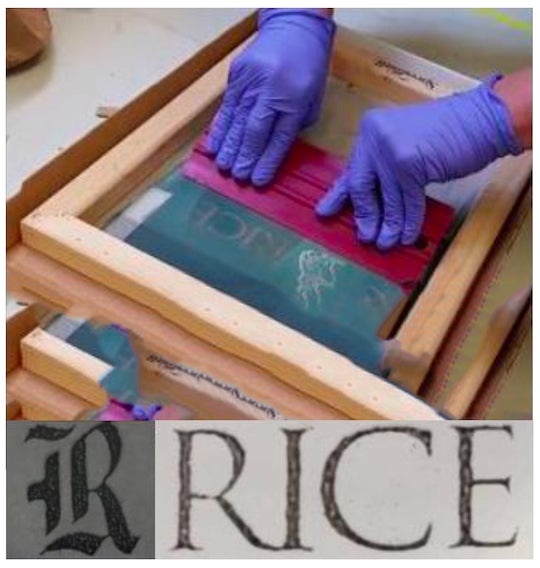
Oleum and chlorosulfonic acids have long been used to dissolve nanotubes without modifying their structures, but both are highly corrosive. By combining oleum with two weaker acids, the team developed a broadly applicable process that enables new manufacturing for nanotubes products.
“The oleum surrounds each individual nanotube and gives it a very localized positive charge,” said Headrick, now a research scientist at Shell. “That charge makes them repel each other.”
After detangling, the milder acids further separate the nanotubes. They found MSA is best for fiber spinning and roll-to-roll film production, while pToS, a solid that melts at 40 degrees Celsius (104 degrees Fahrenheit), is particularly useful for 3D printing applications because it allows nanotube solutions to be processed at a moderate temperature and then solidified by cooling.
The researchers used these stable liquid crystalline solutions to make things in both modern and traditional ways, 3D printing carbon nanotube aerogels and silk screen printing patterns onto a variety of surfaces, including glass.

The solutions also enabled roll-to-roll production of transparent films that can be used as electrodes. “Honestly, it was a little surprising how well that worked,” Headrick said. “It came out pretty flawless on the very first try.”
The researchers noted oleum still requires careful handling, but once diluted with the other acids, the solution is much less aggressive to other materials.
“The acids we’re using are so much gentler that you can use them with common plastics,” Headrick said. “That opens the door to a lot of materials processing and printing techniques that are already in place in manufacturing facilities.
“It’s also really important for integrating carbon nanotubes into other devices, depositing them as one step in a device-manufacturing process,” he said.
They reported the less-corrosive solutions did not give off harmful fumes and were easier to clean up after production. MSA and pToS can also be recycled after processing nanotubes, lowering their environmental impact and energy and processing costs.

Williams said the next step is to fine-tune the solvent for applications, and to determine how factors like chirality and size affect nanotube processing. “It’s really important that we have high-quality, clean, large diameter tubes,” he said.
Co-authors of the paper are alumna Lauren Taylor and graduate students Oliver Dewey and Cedric Ginestra of Rice; graduate student Crystal Owens and professors Gareth McKinley and A. John Hart at the Massachusetts Institute of Technology; alumna Lucy Liberman, graduate student Asia Matatyaho Ya’akobi and Yeshayahu Talmon, a professor emeritus of chemical engineering, at the Technion-Israel Institute of Technology, Haifa, Israel; and Benji Maruyama, autonomous materials lead in the Materials and Manufacturing Directorate, Air Force Research Laboratory.
The research was supported by the Air Force Office of Scientific Research (FA9550-12-1-0035, FA9550-15-1-0370, FA9550-19-1-7045), the Robert A. Welch Foundation (C-1668), the Department of Energy (DE-EE0007865, DE-AR0001015), the NASA Space Technology Research Institute (NNX17AJ32G), a NASA Space Technology Research Fellowship (NNX14AL71H), a National Defense Science and Engineering Graduate Research Fellowship and the United States-Israel Binational Science Foundation (2016161).
- Peer-reviewed study
- Video and images for download
-
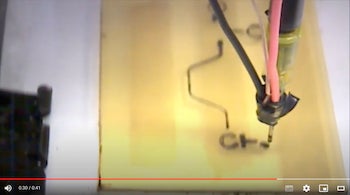
A composite video shows the various ways Rice University researchers are processing carbon nanotubes with a new solvent. The solvent simplifies production of nanotube fibers but also makes possible nanotube films and roll-to-roll production, as well as nanotube inks for 3D and silk screen printing. (Credit: Pasquali Research Group/Rice University)
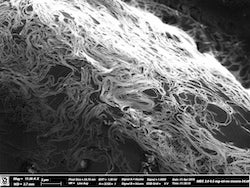
https://news-network.rice.edu/news/files/2022/03/0404_SOLVENT-1-web.jpg
A spaghettilike tangle of carbon nanotubes seen in a microscope image will no longer be an issue when processed with a solvent developed at Rice University. The solvent will enable applications for carbon nanotubes that go beyond the production of conductive fibers, including 3D and roll-to-roll printing. (Credit: Pasquali Research Group/Rice University)

https://news-network.rice.edu/news/files/2022/03/0404_SOLVENT-2-web.jpg
A Rice University lab developed a solvent that enables new applications for carbon nanotubes. Here, a nanotube ink made with the process is used in traditional silk screen printing. (Credit: Pasquali Research Group/Rice University)
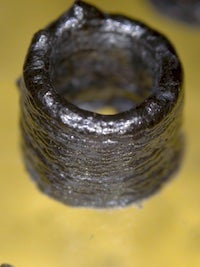
https://news-network.rice.edu/news/files/2022/03/0404_SOLVENT-3a-web.jpg
A 3D-printed cylinder is made entirely of carbon nanotube ink developed at Rice University. The Rice lab made the ink with a gentler, industry-friendly solvent that will enable more uses for nanotubes in materials. (Credit: Pasquali Research Group/Rice University)

https://news-network.rice.edu/news/files/2022/03/0404_SOLVENT-4-web.jpg
Rice University graduate student Steven Williams, left, and alumnus Robert Headrick developed a recipe for an adjustable carbon nanotube solvent that is much easier to work with than the acids commonly used. (Credit: Rice University)

https://news-network.rice.edu/news/files/2022/03/0404_SOLVENT-5-web.jpg
Matteo Pasquali. (Credit: Jeff Fitlow/Rice University)
- Related materials
-
New nanotech fiber: Robust handling, shocking performance: https://news2.rice.edu/2013/01/10/new-nanotech-fiber-robust-handling-shocking-performance-2/
Carbon Hub: www.carbonhub.net
Pasquali Research Group: http://pasquali.rice.edu
Chemical and Biomolecular Engineering: https://chbe.rice.edu
Department of Chemistry: https://chemistry.rice.edu
Department of Materials Science and NanoEngineering: https://msne.rice.edu
- About Rice
-
Located on a 300-acre forested campus in Houston, Rice University is consistently ranked among the nation’s top 20 universities by U.S. News & World Report. Rice has highly respected schools of Architecture, Business, Continuing Studies, Engineering, Humanities, Music, Natural Sciences and Social Sciences and is home to the Baker Institute for Public Policy. With 4,052 undergraduates and 3,484 graduate students, Rice’s undergraduate student-to-faculty ratio is just under 6-to-1. Its residential college system builds close-knit communities and lifelong friendships, just one reason why Rice is ranked No. 1 for lots of race/class interaction and No. 1 for quality of life by the Princeton Review. Rice is also rated as a best value among private universities by Kiplinger’s Personal Finance.

